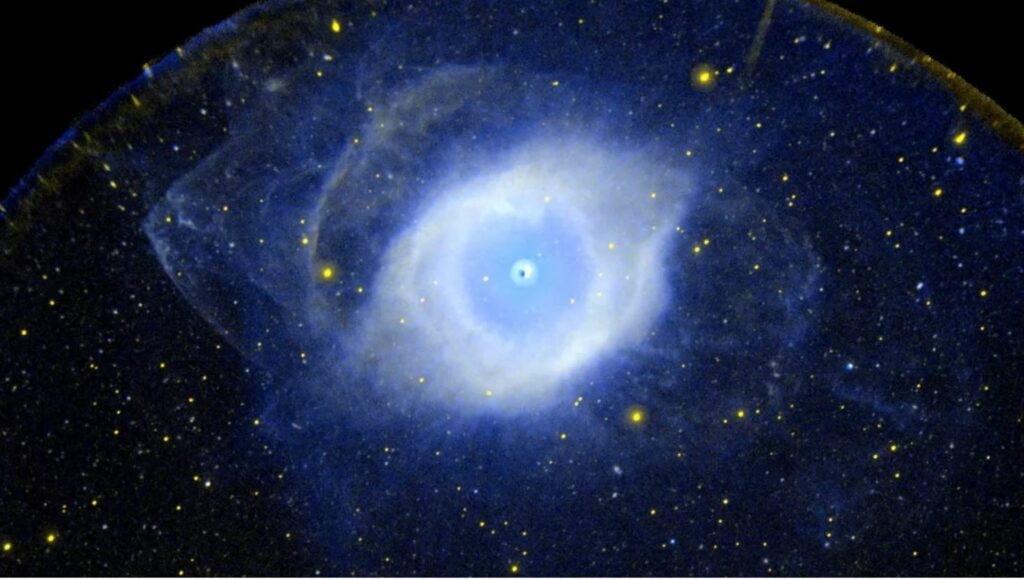New theoretical study challenges the notion of the expanding universe, suggesting it may be an illusion.
According to a recent research inquiry into the cosmological constant problem, the expansion of the universe might be a mirage. This provocative proposal also offers potential solutions to the enigmas surrounding dark energy and dark matter, which together account for approximately 95% of the universe’s total energy and matter but continue to elude scientific understanding.

The innovative approach put forward by Professor Lucas Lombriser, a theoretical physics expert from the University of Geneva, is elucidated in a paper published on June 2 in the journal Classical and Quantum Gravity. By examining the phenomenon of redshift, which refers to the elongation of light’s wavelength toward the redder end of the spectrum as the emitting object moves away from an observer, scientists have inferred the expansion of the universe. Distant galaxies exhibit higher redshift values compared to those closer to us, implying their continuous distancing from Earth.
Recent observations have provided evidence indicating that the expansion of the universe is not constant but, rather, accelerating at an increasingly rapid pace. This accelerated expansion is encapsulated by the cosmological constant, also known as lambda.
The cosmological constant has long posed a conundrum for cosmologists due to a staggering discrepancy of 120 orders of magnitude between predictions of its value made by particle physics and actual observations. It has been deemed “the worst prediction in the history of physics.”
Cosmologists have attempted to reconcile this disparity by postulating new particles or physical forces. However, Lombriser takes a different approach by reimagining the existing concepts.
“In this work, we adopt a new perspective to scrutinize the cosmos and its unresolved mysteries by mathematically transforming the governing physical laws,” explained Lombriser in an email response to Live Science.
In Lombriser’s mathematical interpretation, the universe does not undergo expansion but is instead flat and static, aligning with Einstein’s earlier beliefs. The apparent expansion effects observed are attributed to the evolution of particle masses, such as protons and electrons, over time.
According to this model, these particles originate from a field that permeates space-time. The cosmological constant is determined by the mass of this field, and as it fluctuates, the masses of the particles it engenders also fluctuate. The cosmological constant still exhibits temporal variation, but in this framework, the variation arises from the changing particle mass over time rather than from the expansion of the universe.
Within this model, the field fluctuations result in greater redshifts for distant clusters of galaxies compared to what traditional cosmological models predict. Consequently, the cosmological constant remains consistent with the predictions of this model.
“I was surprised that the cosmological constant problem simply seems to disappear in this new perspective on the cosmos,” remarked Lombriser.
A recipe for the dark universe
Lombriser’s innovative framework also addresses significant cosmological challenges, including the enigmatic nature of dark matter. Dark matter, an invisible substance outnumbering ordinary matter particles by a ratio of 5 to 1, remains mysterious due to its lack of interaction with light.
Lombriser proposes that fluctuations in the field could exhibit properties similar to those of an axion field, which refers to hypothetical particles considered as potential candidates for dark matter.
These fluctuations could also potentially eliminate the need for dark energy, the hypothetical force believed to be responsible for the accelerating expansion of the universe and the increasing separation of galaxies. According to Lombriser’s model, the effects attributed to dark energy would be explained by the varying evolutionary paths of particle masses at later stages of the universe.
Lombriser stated, “In this picture, there is, in principle, no need for dark energy.”
Luz Ángela García, a post-doctoral researcher at the Universidad ECCI in Bogotá, Colombia, expressed admiration for Lombriser’s novel interpretation and its ability to address multiple cosmological problems. García, who was not involved in the research, described the paper as highly interesting and highlighted its potential to resolve the current tensions in cosmology.
Nevertheless, García advises caution when evaluating the findings of the paper, as certain elements of the theoretical model are likely not currently testable through observations, at least in the foreseeable future.
Do not forget to share your opinion with us to provide you with the best posts !




0 Comments